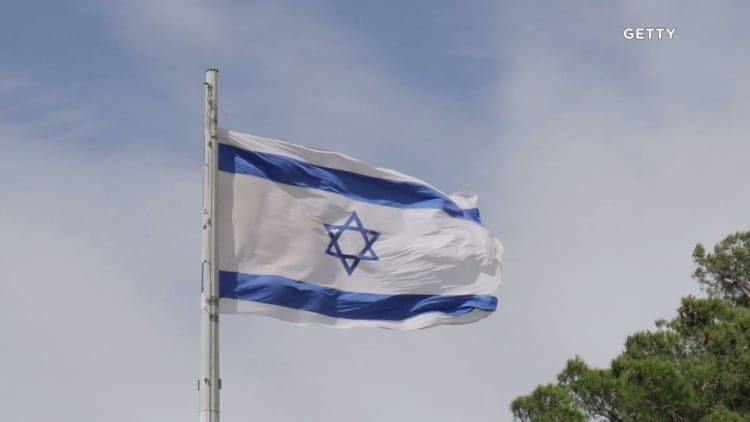
While officials in Seoul try to figure out how to deal with their erratic, missile-launching neighbor to the north, the key to the puzzle may be 5,000 miles away — in Jerusalem.
Officials in South Korea's defense ministry are now debating how they'll spend their budget, on the assumption that the country's parliament will increase it by almost seven percent. But military officials around the world say that even if South Korea's defense forces get the money, it won't be enough to deal with the massive destructive force awaiting them just across the border in North Korea.
"The South Koreans have already established the requirement for low- and medium-tier interceptors," said Tom Karako, director of the Missile Defense Project at the Center for Strategic and International Studies in Washington. He added, however, that "They have yet to move forward."

This month Israel staged a massive military exercise designed to simulate war with terror group Hezbollah and its allies in Lebanon and Syria, and perhaps as far away as Iran.
Israel fought Hezbollah for five weeks in 2006 in a war that shut down Israel's economy in the northern part of the country, and caused wide-scale damage to Southern Lebanon.
Part of the drill incorporates missile defense, as any new war with Hezbollah would likely bring an onslaught of rockets from the north, as it did 11 years ago. Hezbollah is estimated to have more than 100 thousand short-, mid- and long-range missiles stored in hiding places including the homes of civilians in southern Lebanon.
Three rings of defense
As Hezbollah's missile arsenal has grown, so have Israel's anti-missile capabilities. Israel now has three rings of missile defense.
- The Boeing-made Arrow is designed to protect against long-range ballistic missiles, the kind possessed by Iran.
- The recently deployed David's Sling (also known as Magic Wand), co-manufactured by Raytheon and Israeli defense firm Rafael is designed to stop mid-range missiles fired from Lebanon and Syria, aimed toward Israel's population centers in the middle of the country.
- The "Iron Dome" is Israel's answer to shorter range missiles, the kind fired by Hamas and other terrorist groups in Gaza. The system now has greater than a 97 percent effective rate against short-range missiles.
Karako suggested a number of steps South Korea could take that have brought Israel success. Among them is "cooperation and co-development with the United States is crucial. The U.S. and Israel have been doing this for a long time, and the fruits of that cooperation are what you see on the ground, robust missile defense."
Karako also credits Israel with applying the concept of traditional defense rings to the larger arena of missile defense. When security forces guard a shopping mall, they deploy internal security, external security and checkpoints further out.
That same theory applies to Israel's missile defense, according to Karako. "Layered defense is something that allows the Israelis to have increased shots at an incoming threat. It also allows them to use more cost-effective interceptors for threats from different ranges."
Iron Dome costs about $25,000 per projectile, while the Arrow missile can cost 100 times more.
South Korea is a lot bigger than Israel
Experts on missile defense readily concede there is no 100 percent effective solution, and long-range anti-missile systems are not yet fully battle-tested.
Moreover, important differences exist between the needs of South Korea and Israel, said Uzi Eilam, a retired general with the Israel Defense Forces who is widely considered one of the founding fathers of Israel's missile defense program.
The most important is geographical size. Israel comprises slightly more than 8,000 square miles, while South Korea's territory is almost five times as large. "The limited amount of investment that we needed is much less than what will be needed in South Korea," Eilam told CNBC.
While still vulnerable to many kinds of missile and artillery attacks from the north, South Korea deployed the Lockheed Martin-made Terminal High Altitude Area Defense (THAAD) this year.


